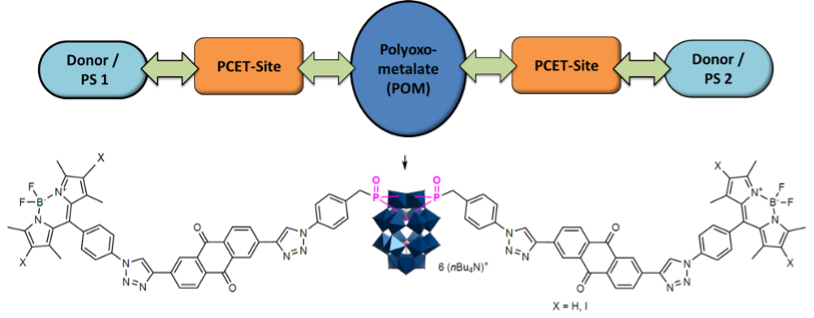Linda Zedler
Leibniz IPHT | Jena, Germany
“Multiphoton Processes and Light-Induced Multi-Electron
Charge-Transfer in Covalent Polyoxometalate Dyads and Triads”

Artifi cial systems for solar energy conversion utilize multi-electron processes and charge separation by accumulation of reduced and oxidized species. Polyoxometallate (POM)-based systems are promising candidates for the generation of green fuels and combine structural variability with unique electron storage and electron transfer properties. By covalent functionalization of POMs with light-absorbing noble-metal free bodipy-quinone dyads and metal complexes like ferrocence as well as proton/electron donors, a wide range of dyads and triads with tuneable (photo)redox-properties can be realized in which both the light-absorption and the charge transfer properties to the POM can be independently optimized (Figure 1). This research focuses fi rst on the investigation of this novel class of substances with respect to light-induced multi-electron and multi-proton processes and second on the iterative structural optimization. For characterization we use spectroscopic tools such as time-resolved spectroscopy and spectroelectrochemistry to analyze the light-induced formation and the properties of charge-separated states during multiple electron transfer from the peripheral groups to the POM.

Figure 1. Schematic and
molecular structure of
bodipy-quinone POM triads.
To investigate multielectron charge transfer to the POM the charge separated state was mimicked by electrochemical methods and its structure analyzed by UV-Vis and rR spectroelectrochemistry. The observed spectral changes upon reduction of the POM prove delocalization of several charges across multiple metal centres.
